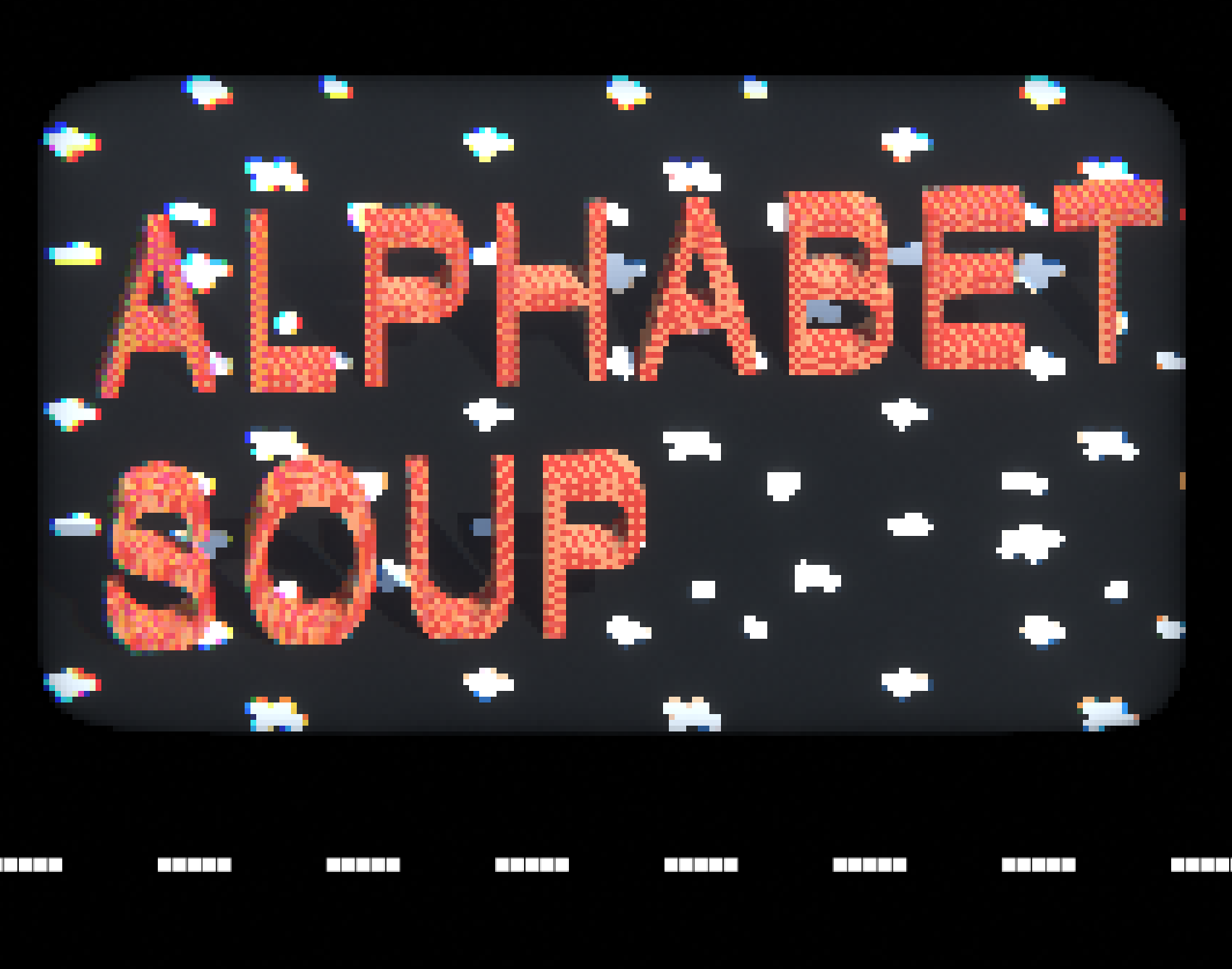Alphabet Soup (Crawlspace) Mac OS
SOUPS ON!!!
- Alphabet Soup (crawlspace) Mac Os Catalina
- Alphabet Soup (crawlspace) Mac Os Pro
- Alphabet Soup (crawlspace) Mac Os X
- Alphabet Soup (crawlspace) Mac Os Download
I was so excited to try this lesson out with my first graders this year–I absolutely LOVE them!! Especially the mixed media/ 3D aspect of them!!! A big shout out and thanks to Lauralee Chambers for the wonderful lesson idea!!
Read below to view process pics and read how we created them!!
(the photos of artwork above and below are by first graders in Mrs. Uthoff’s class)
The focus of this lesson combines letter formation/identification with an understanding of mixed media (we used oil pastels, liquid watercolor paint, markers and charcoal), and three-dimensional elements within artwork.
Our current social climate is marred by anxiety and isolation. Forced closures and restrictions have us scavenging for food, supplies, and resources. How long before art supplies start to run thin? Grab what you can! Make whatever you can! Download free font Alphabet Soup by Kelsey Ann G from category Handwriting. The Apple Macintosh computer introduced a character encoding called Mac Roman in 1984. It was meant to be suitable for Western European desktop publishing. It is a superset of ASCII, and has most of the characters that are in ISO-8859-1 and all the extra characters from Windows-1252 but in a totally different arrangement.
This lesson took 3 (40 minute) art classes to complete.
DAY 1:
After showing students my teacher examples, and reviewing what mixed media is (using multiple art mediums in a piece of artwork), and what 3-D means (artwork that isn’t flat and sticks out–soup spoon and plastic letters), students each received a piece of 9×12″ 80# drawing paper with a circle traced on it (for the soup). The alphabet was projected onto the white board for students to review if needed.
Alphabet Soup (crawlspace) Mac Os Catalina
Students drew the alphabet using oil pastels inside the circle to create their alphabet soup. They were encouraged to draw their letters large, pressing hard (so the oil pastel later on would resist the paint!) as well as draw some upside down, and backwards and going in different directions with multiple colors.
Once drawn and the letters almost filled up their bowl, they drew small orange squares (for carrots) and green circles (for peas). Slot madness casino.
Then students painted over their letters with a yellow-orange liquid watercolor (creating the broth), creating an oil pastel resist!
These soups were then set aside to dry until the next art class!
DAY 2:
Students each received a 12×18″ piece of 80# drawing paper with another (larger) circle pre-traced with black sharpie. This circle was drawn off to the side of their paper, so there would be room for the napkin later on.
After reviewing vertical and horizontal lines, students drew a plaid tablecloth (or placemat) using 2 chosen colored markers. Then kids painted over their lines with water to create a “painterly” look. Students thought it was so fun that the marker could turn into “paint”!
Alphabet Soup (crawlspace) Mac Os Pro
I had students place a paper plate over their “bowl” while painting with water, to avoid water getting inside their traced bowls.

https://trueffil632.weebly.com/777-dragon-casino.html. These were then set aside to dry until the following art class.

Alphabet Soup (crawlspace) Mac Os X
DAY 3:
Alphabet Soup (crawlspace) Mac Os Download
Students cut out their soups carefully and then glued down in the center of the larger traced circle bowl, using a glue stick.
Then they glued down a pre-cut “napkin” (heavyweight tagboard cut to about 4 1/2″ x 9 1/2″) next to their bowls of soup using a glue stick. They then used a piece of charcoal to outline one side of their napkin (I told them to create the letter “L” with their charcoal, as well as half the side of their soup bowl (I told them to create a “C” with their charcoal). I explained this would create a shadow effect, and make it all look more realistic and 3-D. Then students smudged the lines of charcoal with their finger!
This is a first time for first graders using charcoal, and they loved this step!
For the final steps, I glued down a plastic spoon (metal imitation soup spoons found on Amazon) and 2 colored plastic letters (plastic letter beads from Roylco) using a hot glue gun! Show me free slots. Five nights with red stick mans mac os.
They look SO real don’t they??!!
Like I said, I absolutely LOVE this lesson, and I hope you do too!!
Thanks for visiting my blog! Please check back again SOON for more student artwork!!